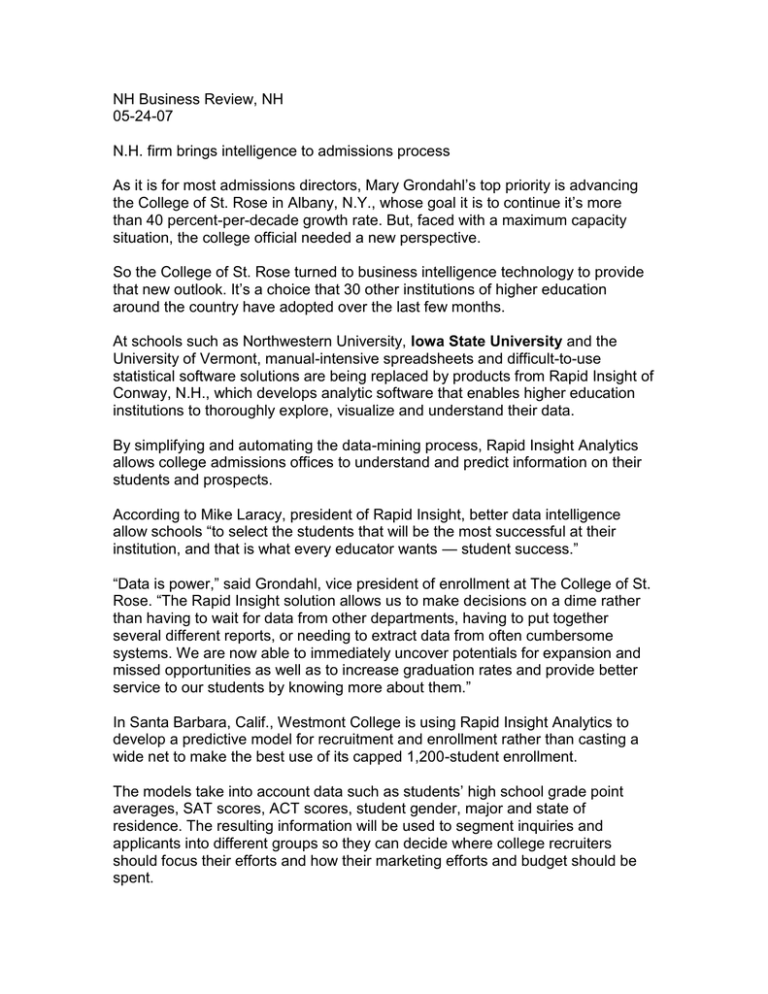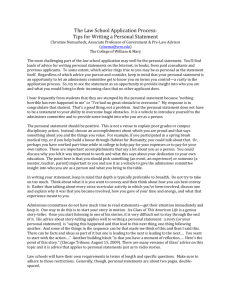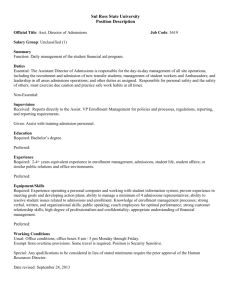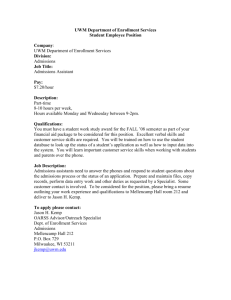NH Business Review, NH 05-24-07 N.H. firm brings intelligence to admissions process
advertisement

NH Business Review, NH 05-24-07 N.H. firm brings intelligence to admissions process As it is for most admissions directors, Mary Grondahl’s top priority is advancing the College of St. Rose in Albany, N.Y., whose goal it is to continue it’s more than 40 percent-per-decade growth rate. But, faced with a maximum capacity situation, the college official needed a new perspective. So the College of St. Rose turned to business intelligence technology to provide that new outlook. It’s a choice that 30 other institutions of higher education around the country have adopted over the last few months. At schools such as Northwestern University, Iowa State University and the University of Vermont, manual-intensive spreadsheets and difficult-to-use statistical software solutions are being replaced by products from Rapid Insight of Conway, N.H., which develops analytic software that enables higher education institutions to thoroughly explore, visualize and understand their data. By simplifying and automating the data-mining process, Rapid Insight Analytics allows college admissions offices to understand and predict information on their students and prospects. According to Mike Laracy, president of Rapid Insight, better data intelligence allow schools “to select the students that will be the most successful at their institution, and that is what every educator wants — student success.” “Data is power,” said Grondahl, vice president of enrollment at The College of St. Rose. “The Rapid Insight solution allows us to make decisions on a dime rather than having to wait for data from other departments, having to put together several different reports, or needing to extract data from often cumbersome systems. We are now able to immediately uncover potentials for expansion and missed opportunities as well as to increase graduation rates and provide better service to our students by knowing more about them.” In Santa Barbara, Calif., Westmont College is using Rapid Insight Analytics to develop a predictive model for recruitment and enrollment rather than casting a wide net to make the best use of its capped 1,200-student enrollment. The models take into account data such as students’ high school grade point averages, SAT scores, ACT scores, student gender, major and state of residence. The resulting information will be used to segment inquiries and applicants into different groups so they can decide where college recruiters should focus their efforts and how their marketing efforts and budget should be spent. Although Westmont only recently started using the solution, Joyce Luy, the school’s dean of admissions, envisions being able to better choose and execute on marketing tactics, such as mailings, advertising and events. “Rather than doing a mailing to all of the prospective students, we can target our mailings more selectively and put the resources that we would have spent towards other, more fruitful, efforts.”






